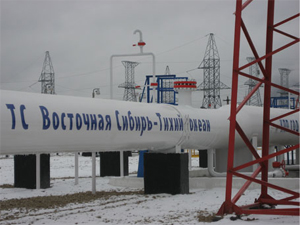Implementation of the new program, developed by the employees of Transneft R&D, LLC, is another stage of development of the earthquake effects control system (EECS) applied in Transneft Far East, LLC. Its improvement has become possible due to automation of the mathematical methods of calculation of pipeline walls intensively strain state.
The software put into experimental service is functioning on the base of geographic information system module used by the enterprise. The special program allows processing data received to the unified server from thirteen seismographs, installed along the linear part and at the ESPO PS-2 facilities.
Using the new program, specialists of the company can not only timely record the fact of earthquake shocks and earth crust movements along pipeline axis, but also precisely specify the location and degree of their influence on the pipeline.
Influence of several seismic events, which have occurred in the Far East from 2009, on the pipeline was analyzed in testing regime. The program showed that even one of the closest to the pipeline recorded earthquakes (2013, epicenter – 260 km from the linear part), magnitude 4.9, did not influence the trunk pipeline condition.
EECS modernization will allow Transneft Far East, LLC to reduce time for specifying top-priority places of inspection after earthquake shocks, which may bear potential risks for the pipeline integrity. This measure in its turn will increase the operation safety level of the ESPO PS-2 facilities.
Finishing experimental testing of the program is planned for July 2016. Suggestions of the employees of Transneft Far East, LLC as regards improvement of the computer application will be taken into account upon its further implementation.
01 Января 2026 | четверг | 23:20


